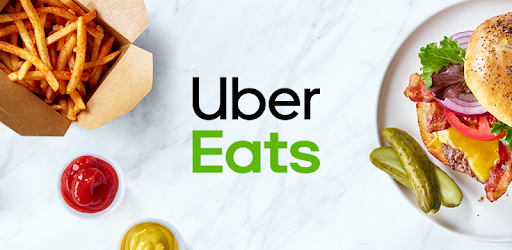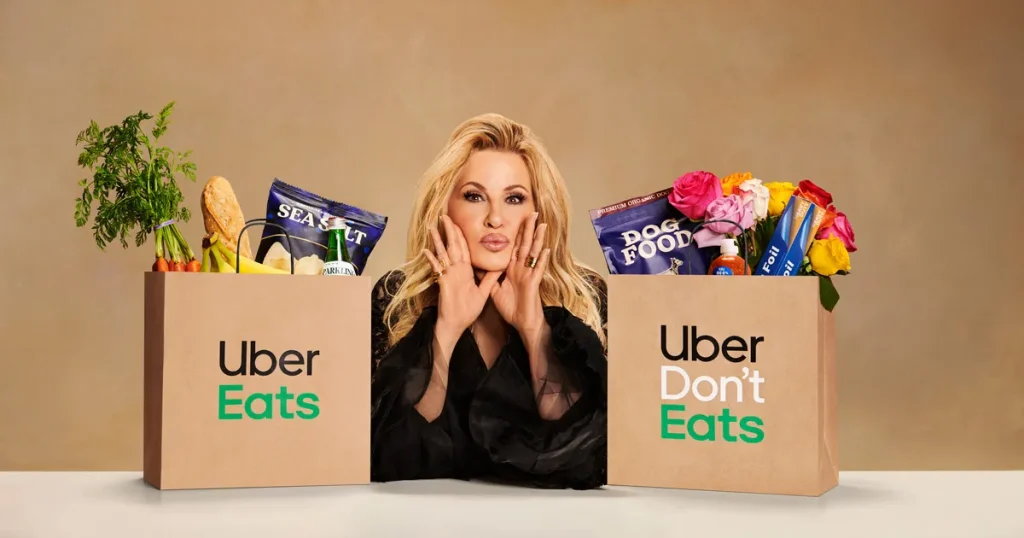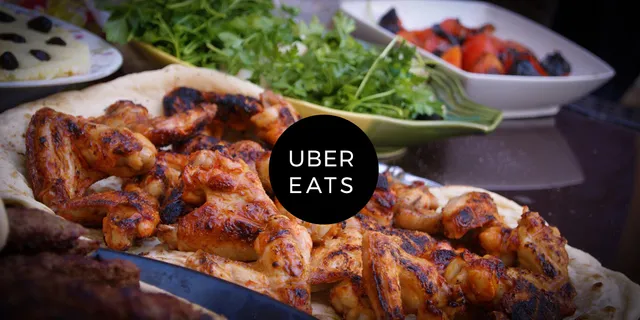
In a time when convenience often defines consumer behavior, food delivery services have become central to how people eat. Among the companies driving this shift, Uber Eats has emerged as a dominant global player. But what exactly sets Uber Eats apart—and how has it continued to innovate and evolve in 2025?
This comprehensive look dives into how Uber Eats is not just a delivery app, but a digital infrastructure for modern dining.
A New Era of On-Demand Dining
Uber Eats isn’t just about delivering food—it’s about delivering choice, speed, and flexibility. Since its launch in 2014, the platform has expanded from a supplemental feature in the Uber ecosystem to one of the world’s largest delivery platforms.
Today, it’s far more than just a middleman between restaurants and customers. Uber Eats has built a framework that caters to a new era of consumer expectations.
Ordering on Uber Eats: A Step-by-Step Overview
Here’s how the typical Uber Eats experience works from a customer’s perspective:
- Open the app or website.
- Enter a delivery address.
- Browse a curated list of local and national restaurants.
- Select dishes and proceed to checkout.
- Track the order in real-time via GPS.
- Receive the meal at the door or designated spot.
Everything—from recommendations to payment—is handled in-app, allowing for an effortless and intuitive process.
Core Advantages That Define the Platform
Seamless Digital Integration
- Uber Eats integrates effortlessly with the main Uber app.
- Users can switch between ride-hailing and food delivery without downloading a second app.
- One Uber Wallet for all purchases, including food and rides.
Real-Time Tracking
- Users can track both preparation time and delivery movement on a map.
- The app updates dynamically, allowing for precise arrival estimates.
Scheduled Deliveries
- Customers can place orders in advance and select specific delivery times.
- Useful for office lunches, family dinners, or planned events.

Who Benefits Most from Uber Eats?
Uber Eats serves multiple types of users and partners, including:
Individual Customers
- Quick meals during busy workdays
- Access to local favorites and national brands
- Night-time or late-hour cravings
- Custom dietary preferences through filter options
Restaurants
- Exposure to wider audiences beyond local foot traffic
- Scalable delivery operations without hiring drivers
- Insights through restaurant dashboards
Delivery Partners
- Flexible schedules—work as much or as little as desired
- Choose preferred delivery zones and hours
- Earnings paid weekly or instantly via Instant Pay
Most Ordered Categories on Uber Eats in 2025
While trends vary by region, these food categories consistently rank at the top globally:
- Fast casual (burgers, chicken, wraps)
- Asian cuisine (sushi, ramen, Thai)
- Pizza and Italian specialties
- Plant-based or vegetarian meals
- Desserts and beverages
- Comfort food and local specialties
Restaurants are increasingly aligning their offerings with these preferences to boost visibility on the platform.
Performance Metrics of Uber Eats (2025 Snapshot)
The table below outlines key metrics that reflect Uber Eats’ reach and performance in 2025:
| Key Indicator | Stat (2025) |
|---|---|
| Active countries | 45+ |
| Partner restaurants | Over 900,000 |
| Active delivery partners | 1.6 million+ |
| Global daily orders | Approx. 5 million |
| Average order delivery time | 30–40 minutes |
| App downloads | 550 million+ |
| Annual gross bookings | $62 billion |

Tools and Features That Streamline Ordering
Uber Eats has implemented several enhancements that reduce ordering friction:
- Smart Reordering: Recommends favorite items based on previous orders.
- Pickup Option: Customers can skip delivery fees by picking up meals themselves.
- Search Filters: Filter by dietary need, price, popularity, or estimated delivery time.
- In-App Support: Live chat support for both customers and partners.
These tools keep users engaged and lower the effort needed to complete a transaction.
Uber Eats for Group and Corporate Orders
Group ordering has become a major feature for teams, households, and remote workers:
- Everyone in a group can add to one shared cart.
- Payment can be split or handled by a single user.
- Corporate accounts allow managers to set meal budgets for employees.
- Remote teams can receive lunch allowances via Uber for Business.
These capabilities are particularly popular in cities with a large remote or hybrid workforce.
How Uber Eats Supports Restaurants
Uber Eats isn’t just about logistics; it’s also a marketing platform. Restaurants benefit from:
- Promotional Tools: Boost visibility with limited-time discounts and featured listings.
- Menu Insights: Track popular dishes and customer preferences.
- Photography Services: Professional images improve conversion rates.
- Flexible Menu Management: Add or remove items instantly through the dashboard.
Independent restaurants can compete with large chains by leveraging Uber Eats’ tools.
Challenges Uber Eats Continues to Navigate
Even a global platform like Uber Eats has its challenges:
- High Commission Fees: Especially difficult for small restaurants.
- Delivery Delays: Traffic, weather, or staffing issues can cause late arrivals.
- Platform Competition: DoorDash, Grubhub, and local apps compete for market share.
- Driver Turnover: Many delivery partners prefer flexible short-term work.
- Packaging Waste: Environmental concerns about disposable containers.
Uber Eats is actively testing solutions like reusable packaging, better driver incentives, and AI-based logistics to address these.
Consumer Trends Driving Platform Innovation
Several broader trends are shaping the way Uber Eats operates in 2025:
- Sustainable Eating: Growing demand for plant-based and eco-conscious options.
- Health-Oriented Menus: Low-carb, gluten-free, and macro-counted dishes are gaining traction.
- Instant Gratification: Shorter delivery windows are preferred, even at premium costs.
- Hyperlocal Discovery: Customers want to discover nearby food gems, not just big chains.
- Subscription Preference: Users are opting for monthly plans like Uber One to save on fees.
Understanding and adapting to these trends is central to Uber Eats long-term strategy.

How Uber Eats Uses Technology to Improve Logistics
The success of Uber Eats hinges on efficient logistics and predictive modeling:
- AI-Powered Forecasting: Predicts busy hours to ensure adequate driver supply.
- GPS Optimization: Real-time traffic data minimizes delays.
- Driver-Order Matching: Orders are assigned to nearby drivers with optimal routing.
- Heat Maps for Restaurants: Show when and where demand spikes.
Technology allows Uber Eats to continuously reduce delivery times and improve accuracy.
Uber One: A Subscription Model That Saves Money
Uber One is a monthly membership that includes:
- $0 delivery fees on eligible orders
- 5–10% off food and grocery deliveries
- Exclusive deals and priority customer service
- Discounts on Uber rides
The subscription appeals to high-frequency users and helps build long-term loyalty.
Sustainability Commitments and Progress
Environmental responsibility is a growing focus for Uber Eats. Key initiatives include:
- Optional Utensils: Customers can opt out to reduce waste.
- Eco-Friendly Packaging: Encouragement for restaurant partners to use sustainable materials.
- Carbon Tracking: Piloting features that show the carbon footprint of orders.
- Electric Delivery: Promoting EVs and e-bikes among delivery partners.
Sustainability is no longer a secondary goal—it’s becoming central to the platform’s identity.
Becoming a Partner: Opportunities for Individuals and Restaurants
For Restaurants
- Sign up through the restaurant portal on Uber Eats.
- Upload menus, hours, and business details.
- Use the Partner Dashboard to manage orders and performance.
- Benefit from in-app promotions and analytics.
For Delivery Drivers
- Apply through the Uber Driver portal.
- Submit a valid license and insurance.
- Use any method of transport—bike, car, scooter.
- Start earning with flexible scheduling and performance bonuses.
Uber Eats offers a low-barrier way to earn income or expand business visibility.

Future Outlook for Uber Eats
Uber Eats is expected to evolve significantly in the next few years. Innovations on the horizon include:
- Drone deliveries in suburban markets
- AI-based meal planning and dietary tracking
- Grocery and pharmacy delivery expansion
- Seamless integration with smart home devices
- Voice-activated ordering
These developments will further solidify its role as a critical player in the on-demand economy.
Final Thoughts
Uber Eats has changed the way people think about dining—not just where they eat, but how they eat. From solo customers to corporate clients and local restaurants, the platform provides a wide-reaching, tech-driven solution to modern food demands.
Its ongoing innovations in logistics, customer experience, and sustainability position it as not just a food delivery service—but a vital piece of urban infrastructure in 2025 and beyond.
